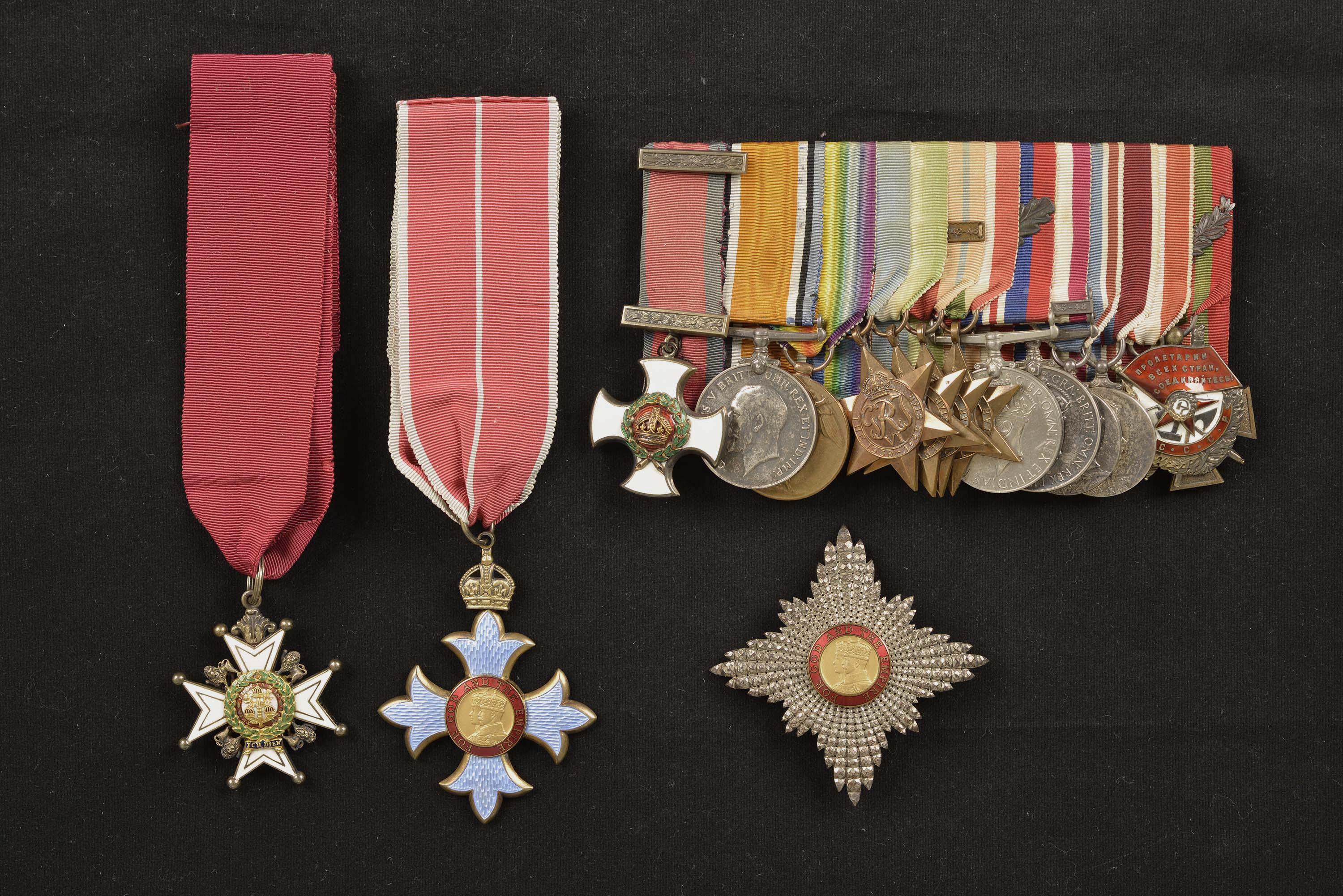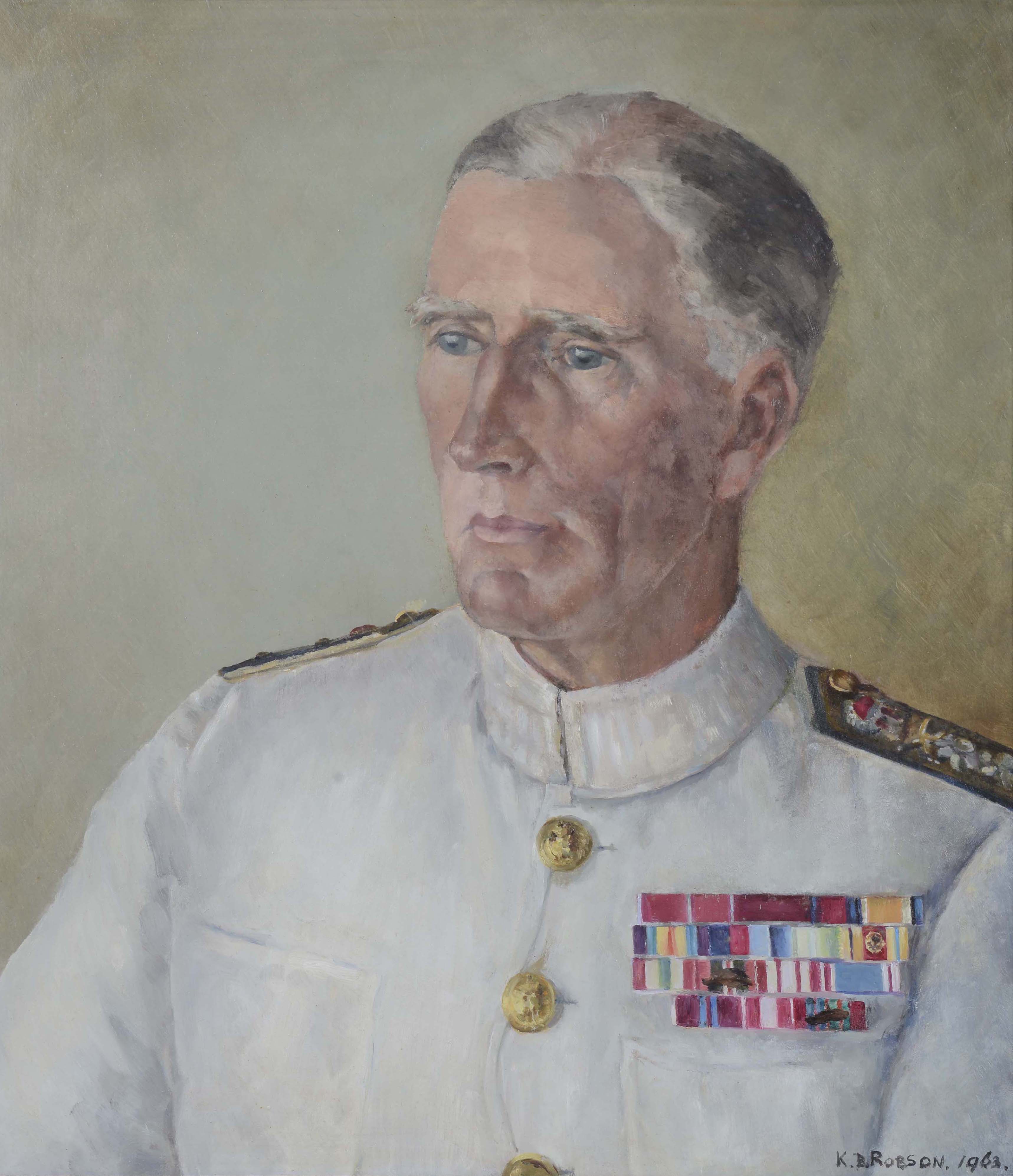

Display No. 15A
RICHMOND, Maxwell
Maxwell Richmond joined the Royal Navy in October 1918 as a special entry cadet and specialised in navigation during his training. He saw no active service during the First World War.
During the inter-war period, Richmond held various navigation positions and progressed in rank to Commander in 1936. At this time he was in command of HMS Hostile, which patrolled the Spanish Coast during the Spanish Civil War.
At the outbreak of the Second World War, Richmond took command of HMS Basilisk which was employed on English Channel escorts and supported landing operations during the Norwegian campaign. On 1 June 1940, Basilisk was sunk by German Stuka bombers while trying to evacuate troops from Dunkirk in Operation Dynamo. Many of the officers and crew were rescued, including Richmond, though there were casualties. For his efforts at Dunkirk, Richmond was awarded the French Croix de Guerre and was Mentioned in Despatches (MiD). In 1941 while serving in HMS Bulldog, he forced a German U-Boat to the surface and captured it along with the vessel’s Enigma encryption machine and code book. The recovered items provided critical information in British attempts to break the German naval codes; for this he was also Mentioned in Despatches (MiD). In 1942 he took part in an action against German naval forces while escorting a convoy to the Soviet Union. For his part in this action he was awarded the Distinguished Service Order (DSO) and the Soviet Order of the Red Banner.
After the war, Richmond served in New Zealand as the Royal Navy Liaison Officer from 1948 to 1950. He then continued his active service in the Royal Navy culminating with his final appointment as second in command of the Mediterranean Fleet. He was created a Commander of the Order of the Bath (CB), and then a Knight Commander of the Most Excellent Order of the British Empire (KBE) upon his retirement.
Awarded medal(s)
Medal Description [Left to Right]:
Companion of the Most Honourable Order of the Bath (CB)
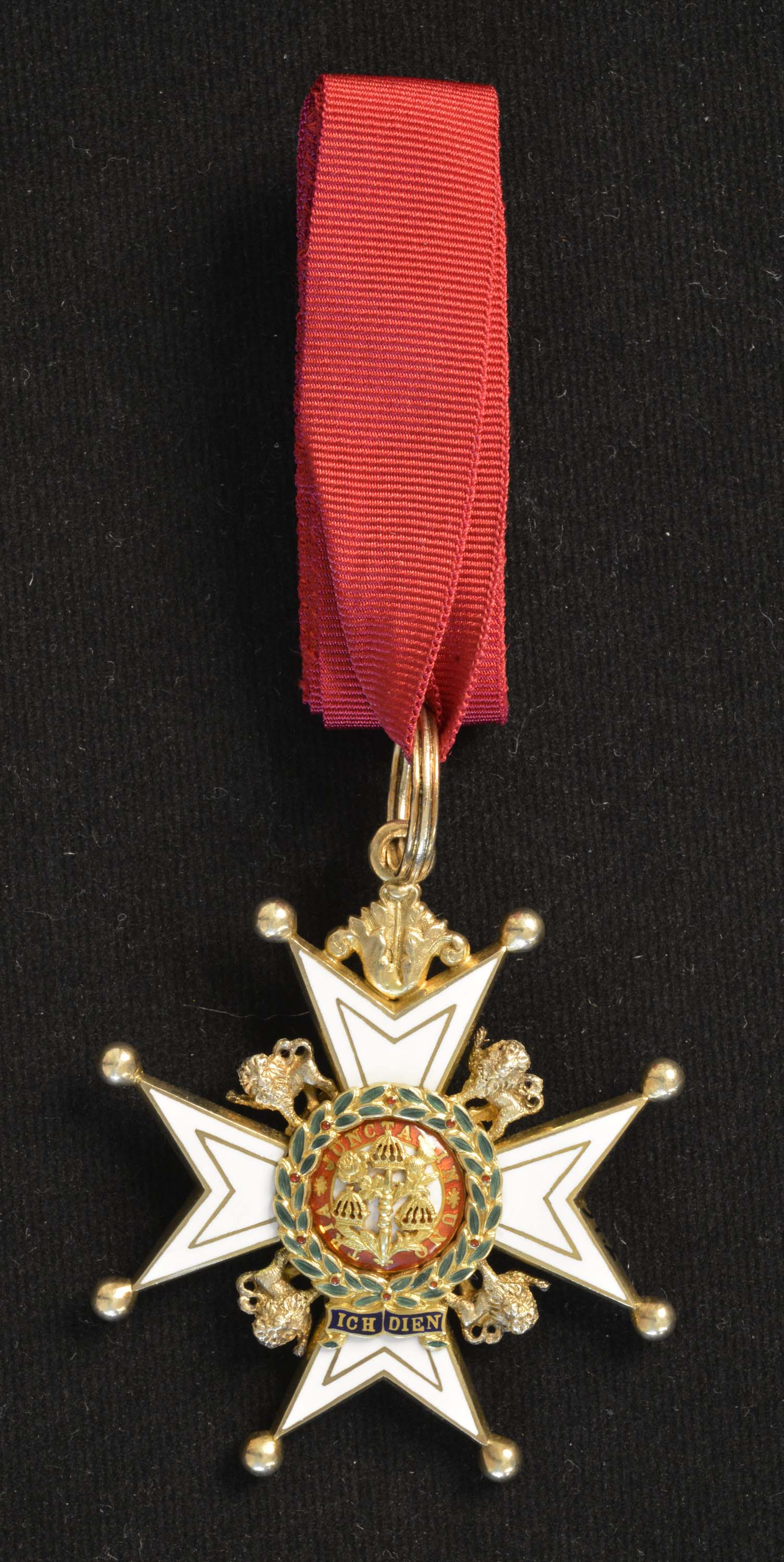
British order of chivalry with three classes of members: Knight and Dame Grand Cross (GCB), Knight and Dame Commander (KCB and DCB) and Companion (CB). It was awarded to military personnel during both World Wars. Recipients of the order are usually senior military officers or senior civil servants. The ribbon is crimson red.
Knight Commander of the Most Excellent Order of the British Empire (KBE)
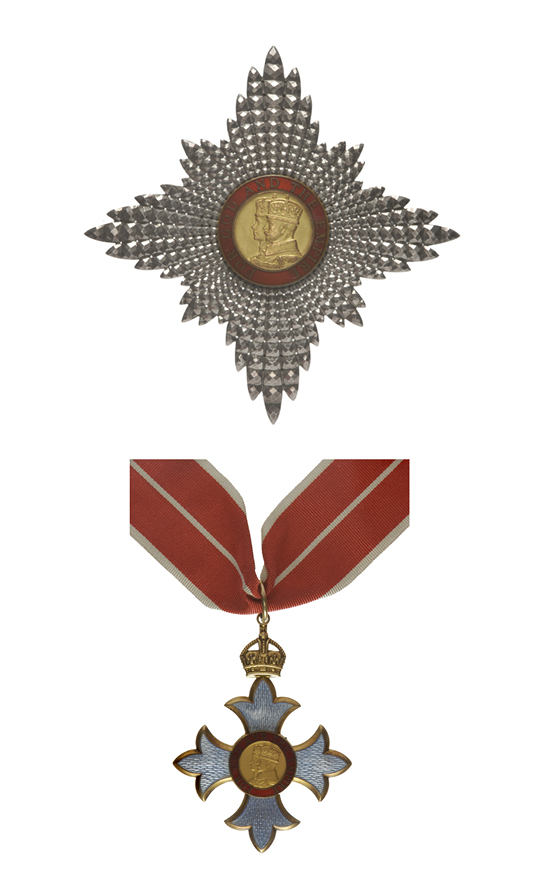
Established by King George V in 1917 for services to the British Empire. The Order has five classes: Knight and Dame Grand Cross (GBE), Knight Commander and Dame Commander (KBE / DBE), Commander (CBE), Officer (OBE) and Member (MBE). The KBE, DBE and CBE badge is silver-gilt with the arms enamelled pearl-grey and a crimson enamelled circle. In December 1918, the Order was split into two divisions: a Civil Division for civilian recipients; and a Military Division for awards to commissioned officers and warrant officers for distinguished service in action. The insignia of the Civil and Military Divisions is distinguished only by the ribbon, the military award having a narrow central stripe. Prior to the introduction of the New Zealand Order of Merit in 1996, the Order of the British Empire was the most common honour awarded to New Zealand military personnel.
Companion of the Distinguished Service Order (DSO)
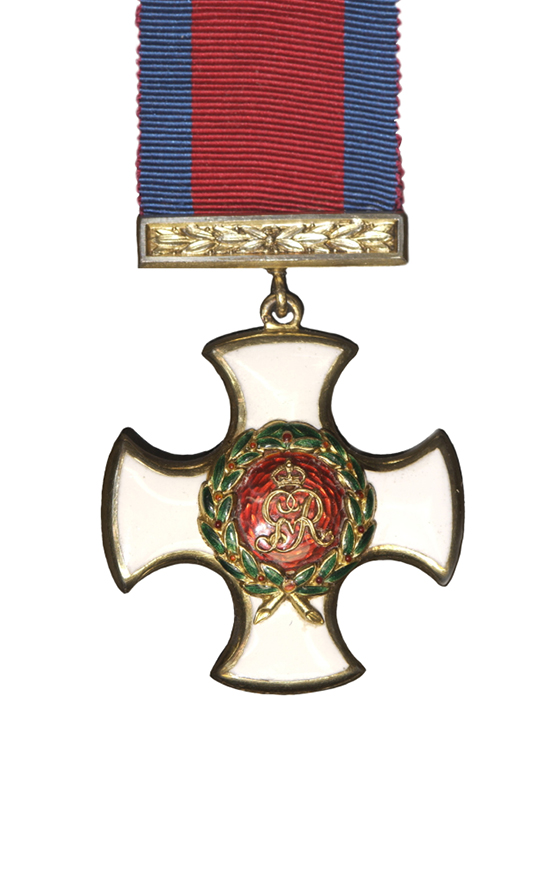
The Companion of the Distinguished Service Order (DSO) was instituted in 1886, to recognise acts of gallantry by military officers for which a Victoria Cross was not considered appropriate. In 1942, the regulations were amended to allow the award to be made to officers of the Merchant Navy for gallantry in the presence of the enemy. Following a UK review of gallantry awards in 1993, the purpose of the DSO was changed to recognise outstanding leadership at all ranks. At that time the Conspicuous Gallantry Cross replaced the award of the DSO for gallantry. The DSO was awarded to over 300 New Zealanders during both World Wars. The DSO is no longer awarded in New Zealand since the introduction of New Zealand’s own system of gallantry and Bravery awards in 1999. Bars are awarded for subsequent acts of gallantry. The ribbon is red with narrow blue edges.
The British War Medal
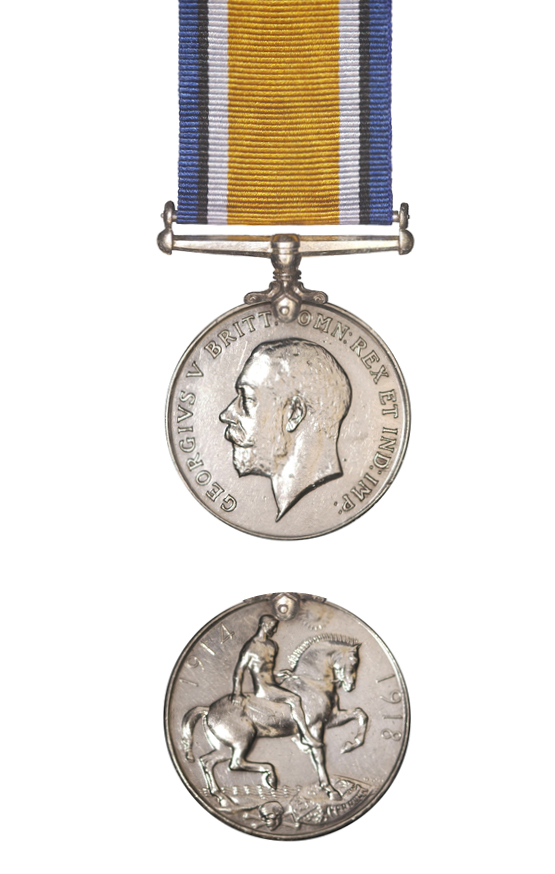
The British War Medal was instituted in 1919 to recognise the successful conclusion of the First World War (1914-1918). Its coverage was later extended to recognise service until 1920, recognising mine clearing operations at sea, and participation in operations in North and South Russia, the eastern Baltic, Siberia, the Black Sea and the Caspian Sea.
The Victory Medal
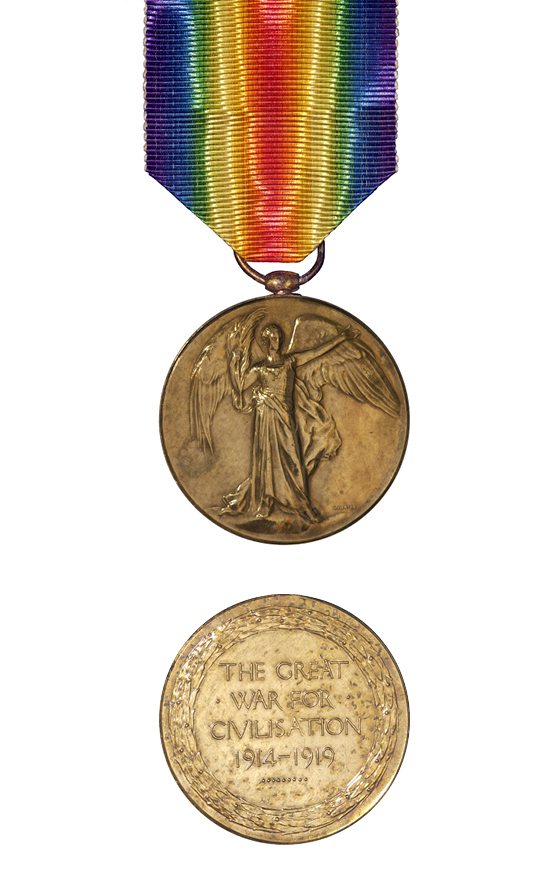
The Victory Medal was awarded in the First World War to all those who had already qualified for the 1914 Star or the 1914-15 Star, and to most persons who had already qualified for the British War Medal. The Victory Medal was awarded to all New Zealand troops serving overseas, except for those who arrived in Samoa after 30 August 1914 and those serving in Great Britain only. It has a unique double rainbow ribbon.
A bronze spray of oak leaves on the medal ribbon denotes that the recipient was Mentioned in Despatches during the period that the medal recognises. To be Mentioned in Despatches a member of the armed forces has had their name mentioned in an official report, written by a superior officer, and sent to a higher command. The report would describe the individual’s gallant or meritorious action in the face of the enemy.
The 1939-1945 Star
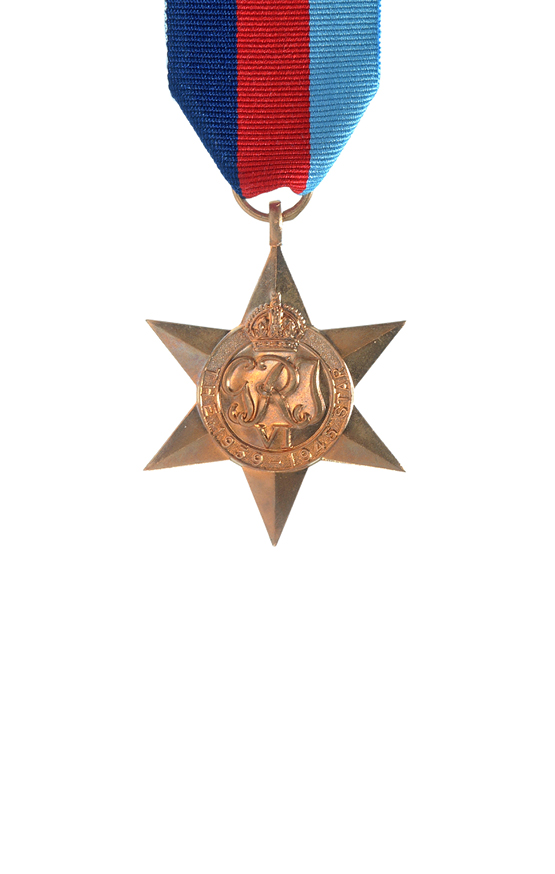
The 1939-45 Star is the first in a series of eight campaign stars instituted in 1945 to recognise service in World War Two. The ribbon has three equal vertical stripes of dark blue, red and light blue. The dark blue stripe symbolises the service of the Navy and the Merchant Navy, the red stripe symbolises the service of the Army, and the light blue stripe symbolises the service of the Air Force. The equal width bands represent the equal contributions of the three service arms towards victory. The ribbon was devised by King George VI. Two clasps could be awarded with this medal: ‘Battle of Britain’ and ‘Bomber Command’. Only aircrew would qualify for these clasps although a small number of Fleet Air Arm naval pilots flew for the air force and would be eligible for the ‘Battle of Britain’ clasp.
The Atlantic Star
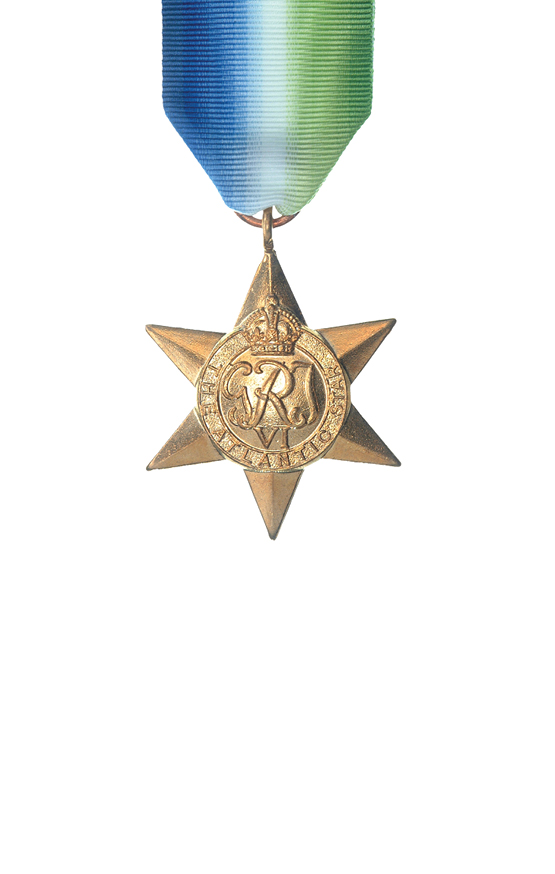
The Atlantic Star was awarded for service during the Second World War. It was instituted to commemorate the Battle of the Atlantic the longest continuous military campaign in the Second World War running from 3 September, 1939 – 8 May, 1945. Six months naval service or four months air service in the Atlantic, United Kingdom (‘home’) waters or North Russian waters was normally required. The ribbon is watered silk coloured blue, white and green, symbolising service in the oceans. Two clasps could be awarded with this medal: ‘France and Germany’ and ‘Air Crew Europe’. Personnel issued the Atlantic Star who then qualified for either the France and Germany and the Air Crew Europe Stars were awarded a clasp in respect of the second only (as only one clasp could be worn on the star).
The Africa Star
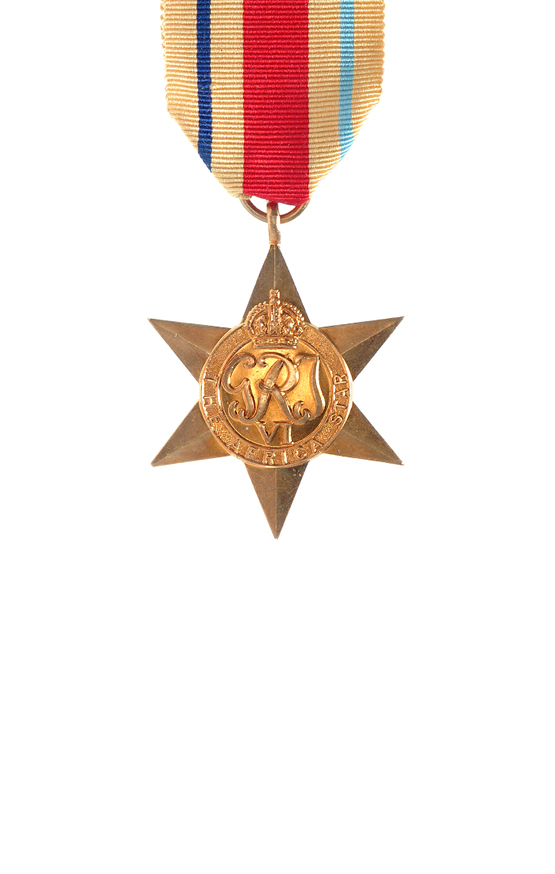
The Africa Star was awarded in the Second World War for service in North Africa between 10 June 1940 and 12 May 1943. The ribbon is pale buff in colour, with a central vertical red stripe, and narrower stripes, one dark blue and the other light blue. The pale buff background symbolises the desert, the central red stripe symbolises the Army, the dark blue stripe symbolises the Navy and Merchant Navy, and the light blue stripe symbolises the Air Force. Three clasps could be awarded with this medal: ‘North Africa 1942-43’, ‘8th Army’, and ‘1st Army’. Naval personnel could only qualify for the ‘North Africa 1942-43’ clasp – for in shore service.
The Italy Star
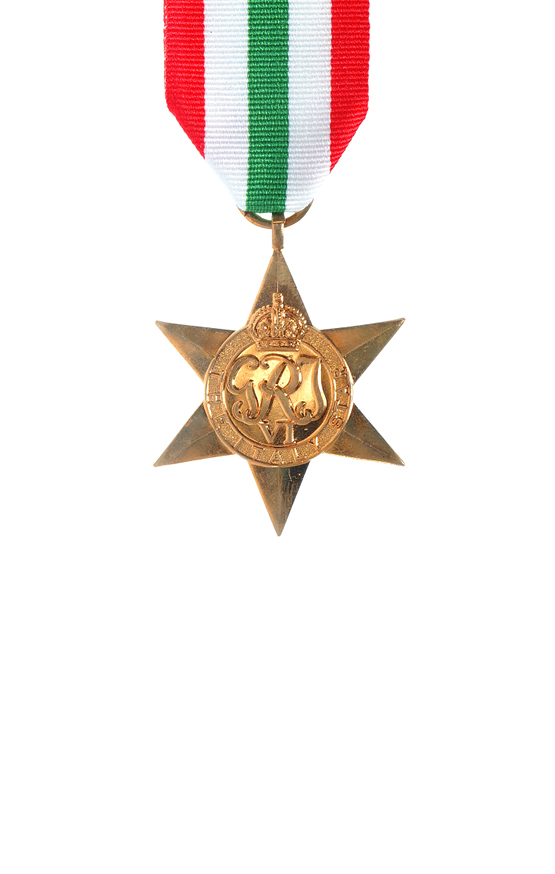
The Italy Star was awarded for operational service in Italy and adjacent countries in the Second World War between 11 June 1943 and 8 May 1945. No clasps were awarded. The ribbon uses the national colours of Italy; red, white and green as seen on the flag.
The War Medal 1939-1945
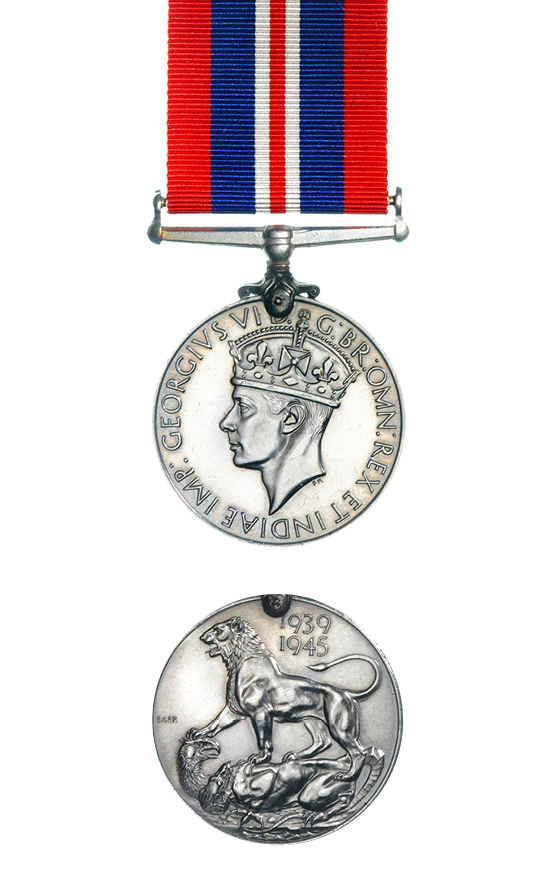
The War Medal 1939-45 was awarded across the British Commonwealth to all full-time members of the Armed Forces in the Second World War for 28 days service between 3 September 1939 and 2 September 1945, irrespective of where they were serving. The ribbon is the red, white, and blue of the (British) Union Flag. There is a narrow central red stripe with a narrow white stripe on either side. There are broad red stripes at either edge, the two intervening stripes being blue.
A bronze oak leaf on the medal ribbon denotes that the recipient was Mentioned in Despatches. To be Mentioned in Despatches a member of the armed forces had their name mentioned in an official report, written by a superior officer, and sent to a higher command. The report would describe the individual’s gallant or meritorious action in the face of the enemy.
The Naval General Service Medal 1915-1962
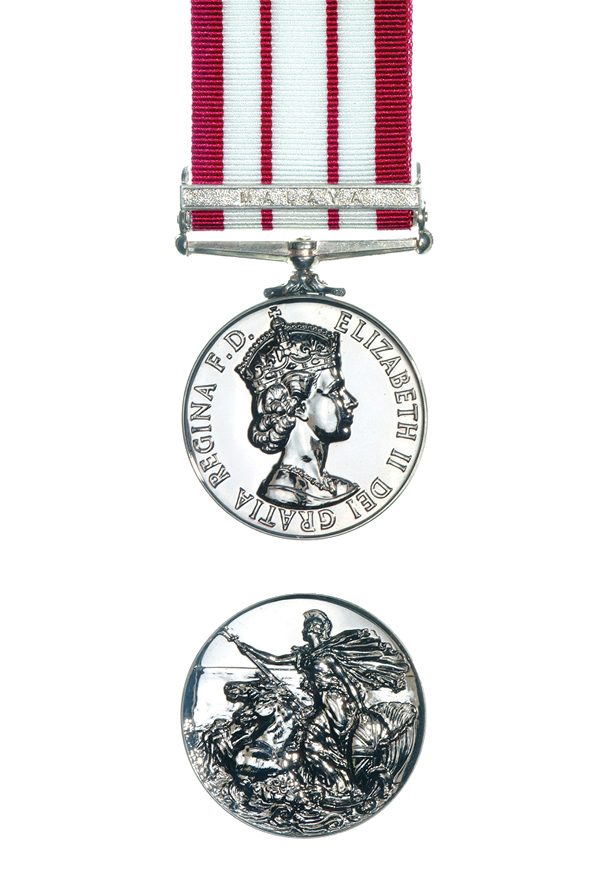
The Naval General Service Medal (NGSM) 1915-1962, was instituted in 1915 to recognise service in minor naval operations for which no separate medal was intended. They were always issued with a clasp for the specific area of operation. A total of seventeen clasps were awarded. Examples in our collection include the ‘Persian Gulf 1909-14’ clasp for operations against gun-runners; the ‘Palestine 1936-39’ and ‘Palestine 1945-48’ clasps which were issued for service in the pre-war Arab uprising and post-war Jewish insurgency; the ‘Minesweeping 1945-51’ clasp which was awarded for six months minesweeping service afloat; the ‘Malaya’ clasp recognising the service of naval personnel, including the Royal New Zealand Navy, during the Malayan Emergency of 1948-1960; and the ‘Yangtze 1949’ clasp for those on HMS Amethyst and other vessels attacked by Communist Chinese forces.
Coronation Medal 1937
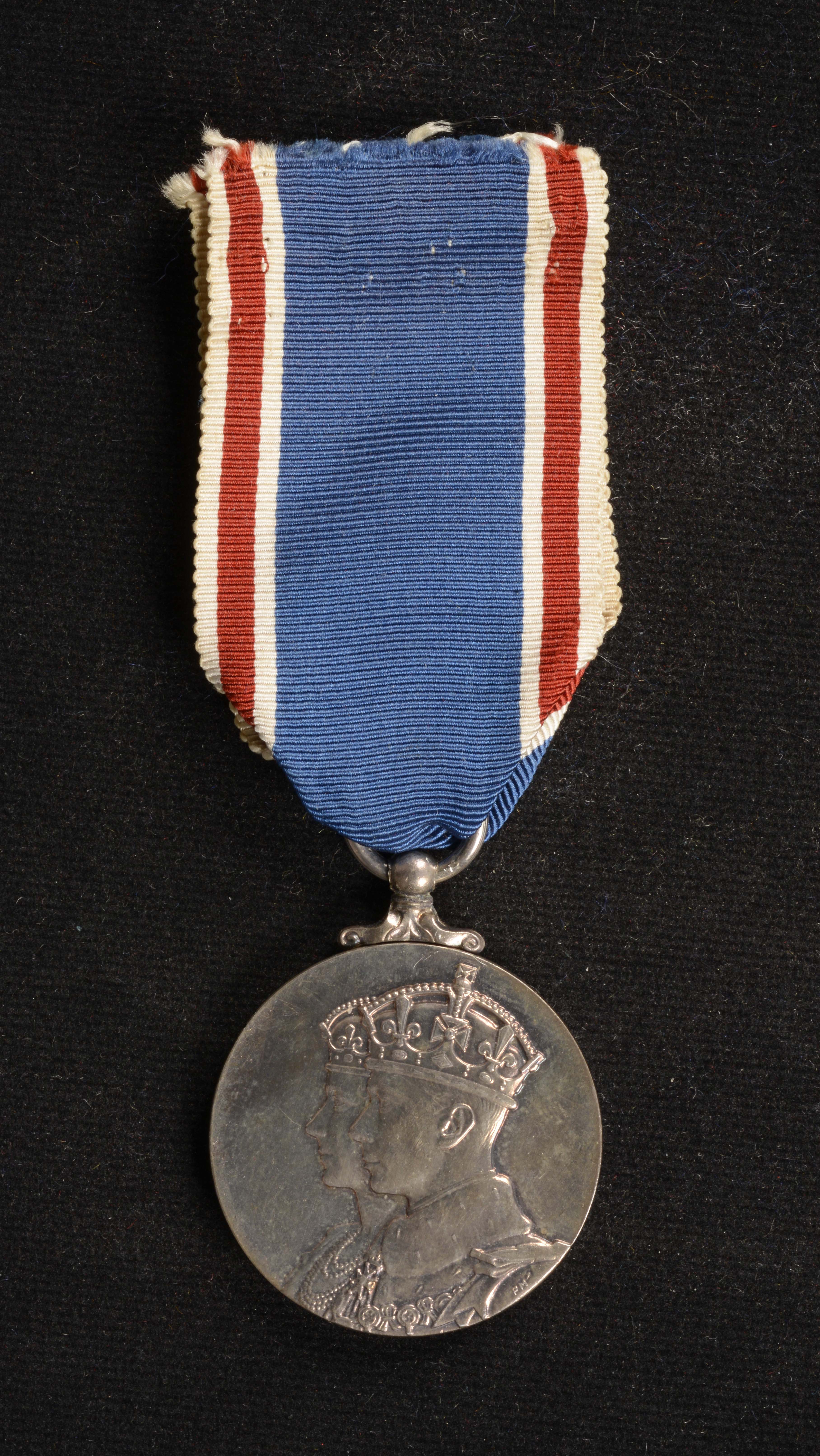
This medal was issued to celebrate the Coronation of King George VI in 1937. This silver medal was awarded in large numbers to citizens of the British Commonwealth including New Zealanders, both military and civilian.
Coronation Medal 1953

This medal was issued to celebrate the coronation of Queen Elizabeth II in 1953. It was awarded to citizens of the British Commonwealth both military and civilian. Only 37 medals were issued with the names of the recipients engraved on them. These were awarded to the members of the British expedition which had reached the summit of Mount Everest on the morning of the Coronation ceremony. New Zealander, Sir Edmund Hillary, one of the two climbers who conquered the mountain, was knighted and received the Coronation Medal from the new Queen at Buckingham Palace several weeks later.
Order of the Red Banner
The first Soviet military decoration established in September 1918, during the Russian Civil War by decree of the All-Russian Central Executive Committee. It was the highest award of Soviet Russia, subsequently the Soviet Union until the Order of Lenin was established in 1930. Recipients were recognised for extraordinary heroism, dedication, and courage demonstrated on the battlefield.
Croix de Guerre (France)
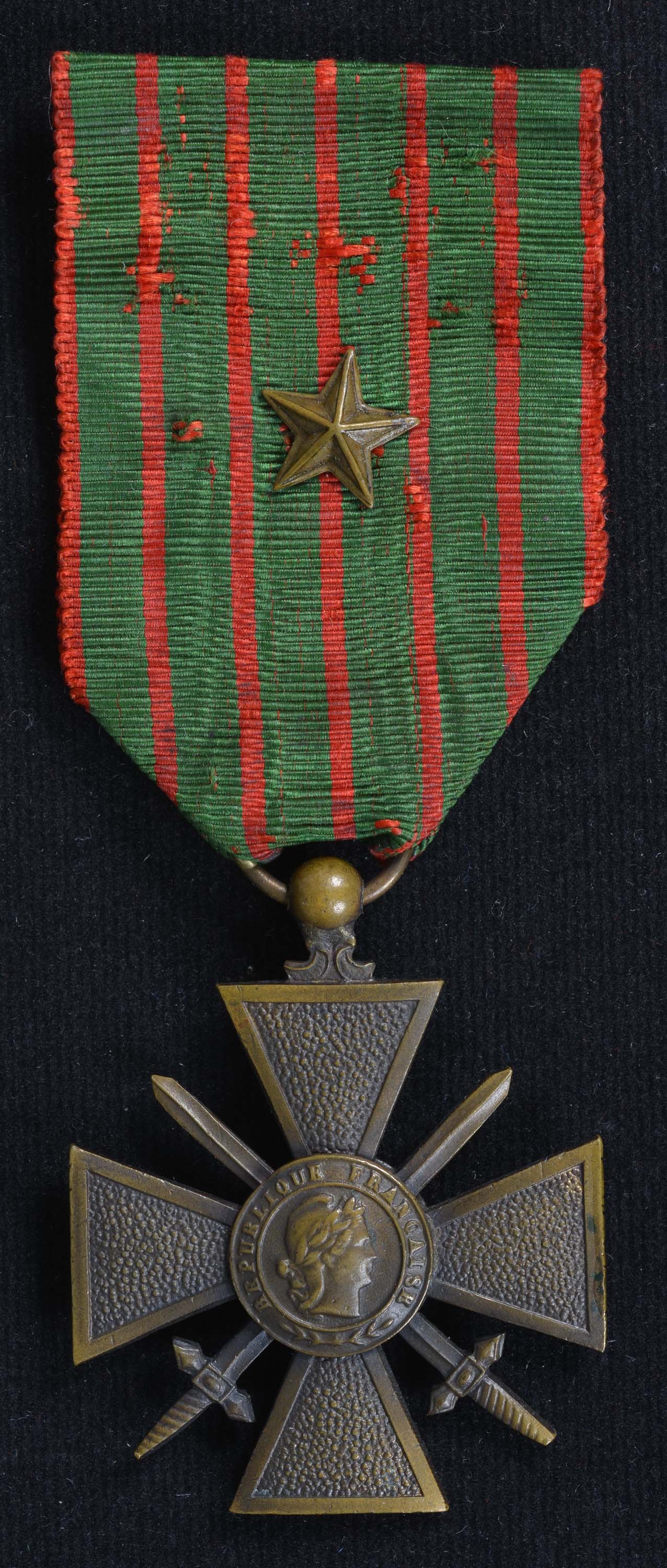
A French military decoration awarded during both the First and Second World Wars and in other conflicts. It may be awarded either as an individual award, or as a unit award to those soldiers who distinguish themselves by acts of heroism, involving combat with the enemy. The medal is awarded to those who have been ‘mentioned in despatches’, meaning a heroic deed or deeds were performed, meriting a citation from an individual’s headquarters unit.
A star or palm emblem in either bronze, silver, or gold would be attached to the ribbon indicating at what level the individual was recognised (i.e. regiment, division, corps, army). Please note this image of the medal includes a bronze star.

